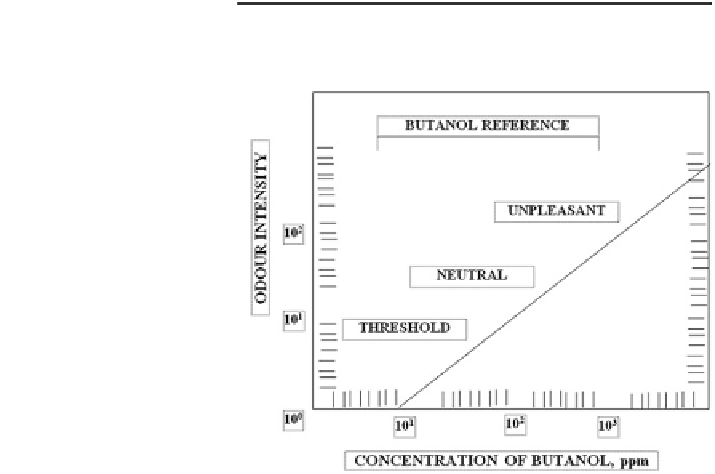Biomedical Engineering Reference
In-Depth Information
Table 4.3 Examples of
category scales [
11
]
Number category
Word category
Scale 1
Scale 2
Scale 1
Scale 2
0
0
None
None at all
1
1
Threshold
Just detectable
2
2.5
Very slight
Very mild
3
5
Slight
Mild
4
7.5
Slight-moderate
Mild-distinct
5
10
Moderate
Distinct
6
12.5
Moderate-strong
Distinct-strong
7
15
Strong
Strong
Fig. 4.3 Standardized
function relating perceived
magnitude to concentration of
1-Butanol [
10
]
A hybrid of category and ratio scales is known as the labeled magnitude scale
[
12
]. This scale is proposed to acquiesce ratio-level data with a true zero and an
orderly relationship among the scale values, such that any stimulus can be
expressed as being proportionately more or less intense than another. Because it
allows subjects to use natural language descriptors to scale perceived experience, it
often requires less training than ratio scales and produces absolute intensity esti-
mates of perceived sensation [
13
] (Fig.
4.4
).
To measure odor intensity another, the fourth way is to match the ''intensity of
odorants''. An observer can be given a concentration series of a matching odorant
(e.g., 1-butanol) to choose the member that matches most closely the intensity of
an unknown odorant. The matching odorant can be generated by a relatively
inexpensive olfactometer is shown in Fig.
4.5
.



Search WWH ::

Custom Search